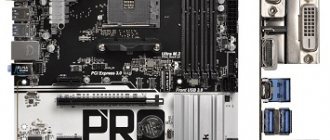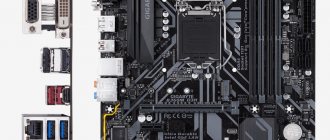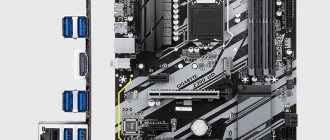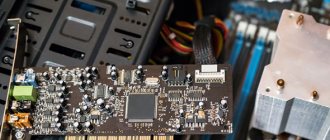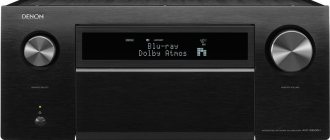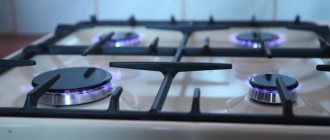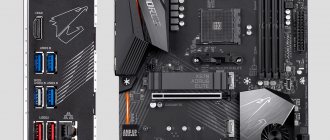What is it, who is it?
So, dual-processor motherboards, as you might guess from the name, have two slots for the chip. They are designed for systems with increased performance. Moreover, gaming PCs have nothing to do with these systems. Despite being demanding, they still don't need much power.
Those chips that can cooperate are called Intel Xeon. This series of server microprocessors. In general, such models have a larger cache size and also support multiprocessor systems. Interestingly, such chips can store up to 18 physical cores and 36 virtual ones. Considering that there are two chips on the board, these figures can be multiplied by two.
Looking at such possibilities, some gaming PC dreamers may be eager to build such a system for themselves. Of course, no one will forbid you to use dual-processor motherboards, and there will be more than enough power for games. But then get ready for the enormous cost of such a machine. And it will be several times larger than even the most powerful gaming computer.
This is due to the fact that, firstly, the processor itself is not cheap, and there are also two of them. Secondly, such power requires a very strong power supply. Thirdly, we must not forget about the cooling system. If the processors overheat, and they do it easily, then the entire system will shut down. Such a board also requires special RAM, which, in addition to its main responsibilities, works to eliminate errors and correct them.
Description
Motherboards (MB), which support the operation of two processors simultaneously, are intended for computers that are subject to severe loads and require increased response speed. The MP architecture is slightly different from conventional ones and its elements are provided with powerful overload protection.
Advantages of motherboards:
- Power. They allow you to process large data streams and are perfect for installation in server stations and gaming PCs with increased power;
- Reliability. Due to excessive loads, its elements are more stable and protected compared to single-core MPs;
Flaws:
- Price. The processor itself is not a cheap thing, and two processors will cost the user a serious amount of money. In addition, it is worth considering the fact that an MP with two connectors is not suitable for every processor;
- Two connectors require more power. Accordingly, to operate the MP you will need a higher power power supply;
- Cooling. Despite the reliability of MP elements, its reliable operation requires powerful cooling. Insufficient cooling can damage the computer during prolonged use and heavy loads;
Thus, from all of the above we can conclude that an MP with 2 connectors is a powerful thing, but expensive.
Note! When purchasing a processor, such as the Intel Xeon e5450, pay attention to compatibility with the motherboard.
Options
Nowadays it is easy to find dual-processor motherboards on the market. They are represented by many well-known and not so well-known manufacturers. Some of them have become iconic, while others, on the contrary, have gone unnoticed. Each such board differs in chip connectors, slots and cooling systems. Basically, the same as the desktop versions.
Some of the models that we will consider today have already gone out of sale due to the fact that they have become outdated. For example, a dual-processor motherboard (775 socket) is unlikely to be installed in any existing PC. The connector has long ceased to be popular. Since it appeared back in 2004, it worked with Pentium 4, Celeron, Pentium Dual-Core and Core 2 Duo.
Asus
Asus has become one of those who have worked hard to create dual-processor motherboards. The manufacturer presented customers with a whole series of these devices. All of them are made with high quality, but still designed for server PCs.
It’s worth starting with the youngest modification - Asus Z9PE-D8 WS. This option was introduced in early 2012. The motherboard was positioned as a device for workstations. The main advantage was then considered to be support for a chip from the Xeon E5 series. It was also possible to install eight RAM modules. At the same time, the volume reached 256 GB.
The overclocking potential also turned out to be quite good. The board showed ample overclocking capabilities: increasing the voltage, adjusting the processor multiplier, adjusting the chipset and various interfaces. After its appearance on the market, this model did not become special. But her followers were more memorable.
Jr
Asus Z10PE-D8 WS and Asus Z10PE D16 WS went on sale in 2014. Both models are designed for installation in servers or workstations. They support the famous Haswell-EP series of chipsets.
"Motherboards" are supplied in stylish packaging. They look identical. There is a gold graphic element on a black background. The board model is indicated on the front, and there is a description of some special technologies. The rear specification is extended.
The junior model supports the connection of eight RAM modules of type RDIMM/LR-DIMM/NVDIMM DDR4-1333/…/2133. The total memory capacity can reach 512 GB. You can also install several accelerators on the board, since support for 4-Way SLI technology is indicated. There are slots for connecting eight SATA hard drives, two Express and one M.2. The form factor of this model is standard for similar system options - EEB.
LGA2011-3 format sockets have 8-channel power supply. Radiators are located near the power elements, which hint that the board still needs additional cooling. The motherboard received a graphics adapter that supports a resolution of 1920x1200. There are two network controllers here - gigabit. There is an audio codec, various indicators and the necessary connectors.
Jingsha - motherboards 2011-3
Jingsha X99
Jingsha X99 V1.0
This model is the pioneer of Jingsha for this socket. It only works with DDR3 RAM, and therefore only supports those processors that work with it.
Jingsha X99 V1.0 motherboard specifications
The main difference of this motherboard is eight DDR3 RAM slots (up to 256GB).
Buy RAM:
- DDR3: First option, second option.
- DDR3 ECC reg: First option, second option.
RAM timings can be controlled by flashing the motherboard's Bios to Bios from Huananzhi X99-TF.
Cost : 5,500 rub. ( Buy ).
Jingsha (or Kllisre) X99-D4
Jingsha (or Kllisre) X99-D4 (AD12-B v1.0)
The Jingsha model (also known as Kllisre) X99-D4 (AD12-B v1.0) is a budget motherboard in the mATX form factor that works with DDR4.
Jingsha (or Kllisre) X99-D4 (AD12-B v1.0) motherboard specifications
Among the nuances, we can highlight the unusual place of M2 NVMe and M2 Wi-Fi, and the absence of PS\2.
In terms of RAM, everything is exactly the same as on all other Chinese motherboards.
Desktop DDR4 with 8 memory banks will not work on this board! Better pay attention to server memory!
Buy RAM:
- DDR4 ECC Reg: First option, second option.
Bios can also be flashed to the BIOS from Huananzhi X99-TF, just like the previous model. However, a glitch appears here in the form of a temperature sensor for the processor and motherboard, which begins to show incorrect values.
Cost : 5,600 rub. ( Buy ).
Jingsha X99-D8
Jingsha X99-D8
Jingsha X99-D8 (or AD12 v1.0) is an early 2021 model and essentially a copy of Jingsha x99 v1.0, the only difference is that this board works with DDR4.
Jingsha X99-D8 motherboard specifications
The main difference from other motherboards is eight DDR4 RAM slots (up to 256Gb). Only the Huananzhi x99-f8 can boast of this.
Desktop DDR4 with 8 memory banks will not work on this board! Better pay attention to server memory!
Buy RAM:
- DDR4 ECC Reg: First option, second option.
RAM can operate up to 2400 MHz for processors of the Xeon 1600 line, others can operate at a maximum frequency that is specified in the processor specifications.
As in the case of Jingsha X99, RAM timings can be controlled by flashing the motherboard Bios to Bios from Huananzhi X99-TF.
Cost : 7,900 rub. ( Buy ).
Jingsha X99-D8 Dual
Jingsha X99-D8 Dual
At the beginning of 2021, a motherboard with two sockets for the 2011-3 platform from Jingsha (model X99-D8 Dual) went on sale. The main feature is two sockets on one platform, and therefore only supports 2600 and 4600 series processors. Works only with DDR4.
Specifications of Jingsha X99-D8 Dual motherboard
The motherboard, as mentioned above, works with DDR4, everything is like all other Chinese motherboards, there are no special features.
Desktop DDR4 with 8 memory banks will not work on this board! Better pay attention to server memory!
Buy RAM:
- DDR4 ECC Reg: First option, second option.
Cost : 13,900 rub. ( Buy ).
Kllisre X99 Dual
Kllisre X99 Dual
This motherboard is a variation of the Jingsha X99-D8 Dual motherboard, only from the Kllisre brand. Same 2 sockets, same DDR4 memory support.
Kllisre X99 Dual motherboard specifications
But there are also nuances:
- Poor build quality
- Dual-channel RAM operating mode
- Poor VRM cooling
In terms of DDR4 RAM, everything is the same as in the Jingsha X99-D8 Dual. No differences.
Desktop DDR4 with 8 memory banks will not work on this board! Better pay attention to server memory!
Buy RAM:
- DDR4 ECC Reg: First option, second option.
Surprisingly, the native Bios supports changing memory timings.
Cost : 8,000 rub. ( Buy ).
Senior
Asus Z10PE D16 WS has become an interesting model, thanks to the fact that the company decided to position it as “for enthusiasts”. It's still the same packaging in black and gold. It shows the main specifications. Inside is the motherboard, which has a form factor standard for server models - SSI EEB.
This model is practically no different from the younger one. It runs on an Intel C612 chip. The first thing that catches your eye is the changed placement of processor sockets. By the way, their format has not changed - LGA 2011-3. This placement made it possible to add as many more slots to the eight. Hence the changed index in the title. As a result, there are 16 memory slots. By the way, the RAM changed its format and began to support DDR4 RDIMM.
Expansion slots, on the contrary, have decreased in number. But this point was compensated by the fact that now four connectors are of x16 type, not just mechanical, but also electrical. The rest of the pair works according to the x8 design.
This model has become the most popular when reviewing the Asus motherboard. Although, in addition to the series described above, there were a couple more, which we will talk about later.
Huananzhi - motherboards 2011-3
Huananzhi Gaming X99-TF
Huananzhi Gaming X99-TF
One of the most popular models from Huananzhi, the distinctive feature of which is its modern design, which was previously not very popular among the Chinese. One of the best boards for this socket (in China).
Huananzhi Gaming X99-TF motherboard specifications
The second difference is that there are 4 slots installed here, both DDR3 (gray) and DDR4 (black).
Desktop DDR4 with 8 memory banks will not work on this board! Better pay attention to server memory!
The maximum amount of DDR3 or DDR4 RAM is 128 GB.
Max. RAM speed:
- for DDR3 - 1866 MHz (*can be overclocked to 2133 MHz)
- for DDR4 - 2400 MHz
Buy RAM:
- DDR3: First option, second option.
- DDR3 ECC reg: First option, second option.
- DDR4 ECC Reg: First option, second option.
*It is possible to set the DDR3 RAM frequency to 2133 MHz as follows:
Another unusual feature of this motherboard is the two coolers installed in the heatsink above the VRM.
- In Bios you need to reset the settings (by pressing F9) or in “Save & Exit”
- You need to go to IntelRCSetup, then to Memory Configuration, where now instead of “DDR3 Voltage Level” you can see “Memory Frequency”, here we set the frequency
- Having made the changes, you need to change auto to manual in “Memory Timings”.
- Save and press reboot.
- Then go to Bios and set timings.
It will not be possible to use both types of memory.
Just as it will not be possible to combine RAM sticks for a home computer and ECC REG.
It is also worth considering that only one M2 NVMe slot operates at x4 speed, the second operates at x2 speed.
Cost : 10,000 rub. ( Buy ).
Huananzhi X99-F8
Huananzhi X99-F8
Perhaps the only major difference (if you do not take into account the changed design) from the previous Huananzhi Gaming X99-TF motherboard is the DDR4-only slots.
Otherwise, this is the same motherboard with the same characteristics:
Specifications of HUANANZHI X99-F8 motherboard
Buy RAM:
- DDR4 ECC Reg: First option, second option.
Cost : 9,500 rub. ( Buy ).
Huananzhi X99-T8
Huananzhi X99-T8
Here is another variation of the Huananzhi Gaming X99-TF motherboard. This time the differences are in the supported memory (DDR3 only) and a limited list of supported processors.
Otherwise, all characteristics are identical.
Huananzhi X99-T8 motherboard specifications
Buy RAM:
- DDR3: First option, second option.
- DDR3 ECC reg: First option, second option.
Cost : 10,000 rub. ( Buy ).
HUANANZHI X99-AD3
HUANANZHI X99-AD3
The Huananzhi X99-AD3 model is the progenitor of the Huananzhi X99-T8 and had several childhood illnesses, from which more modern models have already been relieved. However, in the 3rd revision of Huananzhi X99-AD3 they have already been eliminated, today we will talk about it. Its characteristics:
Specifications of HUANANZHI X99-AD3 motherboard
This motherboard can only work with DDR3 memory modules, having 4 slots for them.
The maximum speed of RAM is 1866 MHz (in the bios there is a higher value setting, but in fact it will not work above 1866 MHz).
Buy RAM:
- DDR3: First option, second option.
- DDR3 ECC reg: First option, second option.
Otherwise, there are no noticeable differences between the latest revision and the Huananzhi X99-T8.
Cost : 9,300 rub. ( Buy ).
Huananzhi X99-8M
Huananzhi X99-8M
Huananzhi X99-8M is currently one of two models from Huananzhi for this platform in the mATX form factor. It has only two memory channels installed and is used to assemble miniature PCs.
Huananzhi X99-8M motherboard specifications
It should also be mentioned that the memory frequency with which the motherboard will work depends on the processor that will be integrated.
Buy RAM:
- DDR4 ECC Reg: First option, second option.
Otherwise, all memory characteristics and working conditions with it do not differ from those in other motherboards of this brand.
Cost : 6,000 rub. ( Buy ).
Huananzhi X99-8MD3
Huananzhi X99-8MD3
This model is available in the mATX form factor and is a variation of the Huananzhi X99-8M, but with DDR3, unlike its predecessor. Accordingly, only processors that support DDR3 RAM are now supported. Otherwise, there are no differences from the previous model.
Specifications of Huananzhi X99-8MD3 motherboard
Buy RAM:
- DDR3: First option, second option.
- DDR3 ECC reg: First option, second option.
Cost : 6,500 rub. ( Buy ).
Huananzhi X99-T8D
Huananzhi X99-T8D
Huananzhi X99-T8D is a pioneer of motherboards from this manufacturer with two sockets on this platform. Works only with DDR3 RAM.
Huananzhi X99-T8D motherboard specifications
Quad-channel RAM mode is supported for each processor.
The maximum RAM frequency does not exceed 1866 MHz.
Buy RAM:
- DDR3: First option, second option.
- DDR3 ECC reg: First option, second option.
Cost : 12,000 rub. ( Buy ).
Huananzhi X99-F8D
Huananzhi X99-F8D
The Huananzhi X99-F8D model is a variation of the Huananzhi X99-T8D model, but already works only with DDR4 RAM.
Huananzhi X99-F8D motherboard specifications
If you use only one processor, then on this motherboard (unlike others with two sockets) you do not need to supply power to the second processor connector. With one processor, all functions work except one of the PCI-E x16 ones.
Like its brother (Huananzhi X99-T8D), this model has a full-fledged four-channel RAM mode for each processor.
Buy RAM:
- DDR4 ECC Reg: First option, second option.
Desktop DDR4 with 8 memory banks will not work on this board! Better pay attention to server memory!
Another difference from the Huananzhi X99-T8D lies in the BIOS settings - the timing settings option is in the code, but it is not available.
Cost : 12,000 rub. ( Buy ).
Forgotten
One of the long-forgotten boards was the Asus NCT-D (E7525). In 2004, its cost was $450, and the model was considered very fast and expensive.
The box indicated minimal information about the board. It had a glossy black color and displayed the company logo and motto. Inside there were special screws to fasten the device to the PC case. There were some adapters, plugs and “waste paper”. Interestingly, this model was made in the ATX form factor, which is now a rarity for server boards.
The batteries were protected by a radiator, although such cooling, of course, was not enough. A rubber gasket was also placed for heat transfer. Voltage stabilizers were installed for additional power supply. But since they were not cooled, the question arose about the purpose of that radiator. Maybe it just served as decoration.
The board's power supply is provided by a 24+8 connector. The power supply must have a power of at least 400 W. RAM is represented by four slots, the maximum volume reached 8 GB.
Top 10 best motherboards for mining in 2021 according to KP
ASRock H110 Pro BTC+
ASRock H110 Pro BTC+ Photo: ASRock
This motherboard is designed specifically for mining and is equipped with 12 graphics card slots, as well as additional power connectors, which allows the device to operate smoothly.
The motherboard has a high-quality copper coating, and the printed circuit board itself is made of the latest materials, which guarantees that the device does not overheat, economical power consumption and uninterrupted operation.
The network module installed on this motherboard provides high bandwidth, low CPU load.
Main characteristics
| Form factor: | ATX |
| Socket: | LGA1151 |
| Memory: | 2 x DDR4 DIMM (2133-2400 MHz) |
| M.2 interface: | 1 x SATA 3.0 |
| PCI-E x16: | 1 slot |
| PCI-E x1: | 12 slots |
Advantages and disadvantages
Convenient location of slots, 12 slots for video cards, simple setup, all tasks are easily solved
The ports are located too close, you can accidentally pull out the adjacent riser, the BIOS is not intuitive - setting up for Linux is difficult
show more
Mining in questions and answers
What is virtual currency, who are the miners, and why do they buy video cards?
GIGABYTE GA-H110-D3A (rev. 1.0)
GIGABYTE GA-H110-D3A (rev. 1.0) Photo: GIGABYTE
A motherboard that is fully compatible with the latest 6th and 7th generation Intel® Core™ processors (14nm desktop CPU die, Socket LGA 1151).
The platform easily adapts to advanced DDR4 RAM modules. The device is energy efficient, has extensive functionality, and is capable of performing any mining tasks.
Branded
At the same time, in 2004, the Intel SE7525GP2 motherboard appeared. The manufacturer, obviously, decided to show the world a universal “motherboard”, which, among other things, received a built-in ATi RageXL graphics chip. Therefore, the model could be safely used not only for a server, but also for a workstation.
The box in which the model was delivered turned out to be very bright and colorful. In 2004, this was surprising and unusual. The board and some of its specifications were displayed on the front. It’s worth saying right away that the graphics were already outdated at that time, although they could be used for 2D graphics. It received 8 MB of memory and, in principle, could cope with a resolution of 1600x1200.
An 8-phase connector is used for power, and there are special levers that hold the connection cable. At that time, stabilizers were just getting smaller in size, so it was a surprise that they were smaller on this model. Now the back side of the board is free.
This Intel motherboard has abandoned the four-pin fan slots. The RAM format here is DDR400. It was possible to install four modules at once, thereby maximizing the RAM to 8 GB.
System unit
The system unit in a computer is the “main” unit. If you carefully unscrew the screws from its back wall, remove the side panel and look inside, then only in appearance its structure will seem complicated. Now I will briefly describe its structure, and then I will describe the main elements in the most understandable language.
The system unit contains the following elements (not necessarily all at once):
- Power unit
— Hard disk drive (HDD)
— Floppy disk drive (FDD)
— CD or DVD drive (CD/DVD ROM)
— Connectors for additional devices (ports) on the rear (sometimes also on the front) panel, etc.
— The system board (more often called the motherboard), which, in turn, contains:
- microprocessor;
- mathematical coprocessor;
- clock generator;
- memory chips (RAM, ROM, cache memory, CMOS memory)
- controllers (adapters) of devices: keyboards, disks, etc.
- sound, video and network cards;
- timer, etc.
All of them are connected to the motherboard using connectors (slots). We will look at its elements in bold below.
And now, in order, about the system unit:
1. Everything is clear with the power supply: it powers the computer. Let me just say that the higher its power rating, the cooler it is.
2. A hard disk drive (HDD - hard disk drive) is popularly called a hard drive.
This nickname arose from the slang name for the first model of a 16 KB hard drive (IBM, 1973), which had 30 tracks of 30 sectors, which coincidentally coincided with the “30/30” caliber of the famous Winchester hunting rifle. The capacity of this drive is usually measured in gigabytes: from 20 GB (on old computers) to several Terrabytes (1 TB = 1024 GB). The most common hard drive capacity is 250-500 GB. The speed of operations depends on the rotation speed (5400-10000 rpm). Depending on the type of connection between the hard drive and the motherboard, ATA and IDE are distinguished.
3. A floppy disk drive (FDD - floppy disk drive) is nothing more than a floppy drive for floppy disks. Their standard capacity is 1.44 MB with a diameter of 3.5″ (89 mm). Magnetic disks use magnetic materials with special properties as a storage medium that allows them to record two magnetic states, each of which is assigned binary digits: 0 and 1.
4. Optical disk drives (CD-ROM) come in different diameters (3.5″ and 5.25″) and capacities. The most common of them are with a capacity of 700 MB. It happens that CD discs can be used for recording only once (then they are called R), and it is more profitable to use repeatedly rewritable RW discs.
DVD originally stood for Digital Video Disk. Despite the name, DVDs can record anything from music to data. Therefore, recently another decoding of this name has become increasingly common - Digital Versatile Disk, loosely translated meaning “digital universal disk”. The main difference between DVDs and CDs is the amount of information that can be recorded on such media. From 4.7 to 13, and even up to 17 Gb can be recorded on a DVD disc. This is achieved in several ways. First, reading DVDs uses a laser with a shorter wavelength than reading CDs, which has significantly increased recording density. Secondly, the standard provides for so-called double-layer discs, in which on one side the data is recorded in two layers, while one layer is translucent, and the second layer is read “through” the first. This made it possible to write data to both sides of DVDs, thereby doubling their capacity, which is sometimes done.
5. Other additional devices (mouse, printer, scanner, etc.) can be connected to the personal computer. The connection is made through ports - special connectors on the rear panel.
There are parallel (LPT), serial (COM) and universal serial (USB) ports. A serial port transmits information bit by bit (slower) over a small number of wires. A mouse and modem are connected to the serial port.
Experiment
Despite the fact that it was previously said that dual-processor motherboards are pointless to use on gaming PCs, there was an EVGA Classified SR-X model that boldly addressed this issue. As a result, buyers were faced with a very interesting and creative task, as well as a difficult choice: whether to make a gaming server board or save money and give preference to gaming models.
Of course, a dual-processor gaming motherboard in its direct form does not exist. But the EVGA Classified SR-X comes as close to that title as possible. It was first announced in 2012. It has an interesting appearance that is reminiscent of modern gaming motherboards. The manufacturer confidently assured that this model is a revolutionary standard for enthusiasts. In addition to the fact that two chipsets can be installed here, there is also the possibility of installing four graphics accelerators at once. Of course, such an application attracted the attention of many gamers.
This board is based on processors from the Xeon E5-2600 and Intel C606 series. The socket connector for the LGA 2011 chip is available in two variations. Each is powered by six-phase power. For RAM there are as many as 12 DDR3-1600 type connectors, which allows the user to install 96 GB.
Interestingly, the board has seven PCI-E 3.0 x16 ports, which are controlled by proprietary technology. As a result, if you connect all four video cards, three of them will work at full capacity, and the last one will have to share the 16x line in half with the third.
conclusions
Recently, the market for these boards has become much smaller. Desktop versions increase in power and become more ergonomic. There is no point in buying a motherboard with the same performance, but at a cost several times higher.
Previously, products from Intel stood out among all; there were much more of them. But the dual-processor AMD motherboard was presented in several models. For example, ASUS KGPE-D16, which ran on an AMD SR5690 processor. In 2010, this was a good option for server stations. The system could combine 24 cores, which received a bus frequency of 6.4 GT/s.
Despite the outdated formats, you can find dual-processor motherboards for Socket 1150. This model is now considered the Supermicro X10SLE-DF board. This manufacturer is generally the most widespread in the production of systems for server stations.
Reviews
Users rarely leave reviews, since this is a rather unclaimed product. And they rarely buy it for desktop versions. But those who decided to buy this device were advised to immediately purchase a couple of coolers, a powerful power supply and, of course, place all this in a spacious case. Even though all current games will run perfectly, you should be prepared for a noisy PC.
In general, everyone who decided to buy a server motherboard for 30 thousand rubles or more praises the performance. In this case, the board will never show slowdowns, FPS drops and all other standard problems. This model has unlimited possibilities, allows you to experiment and install all kinds of peripheral devices. But it is worth remembering that the highest quality system will turn out if you do not spare money on it. And it will take a lot of money.
